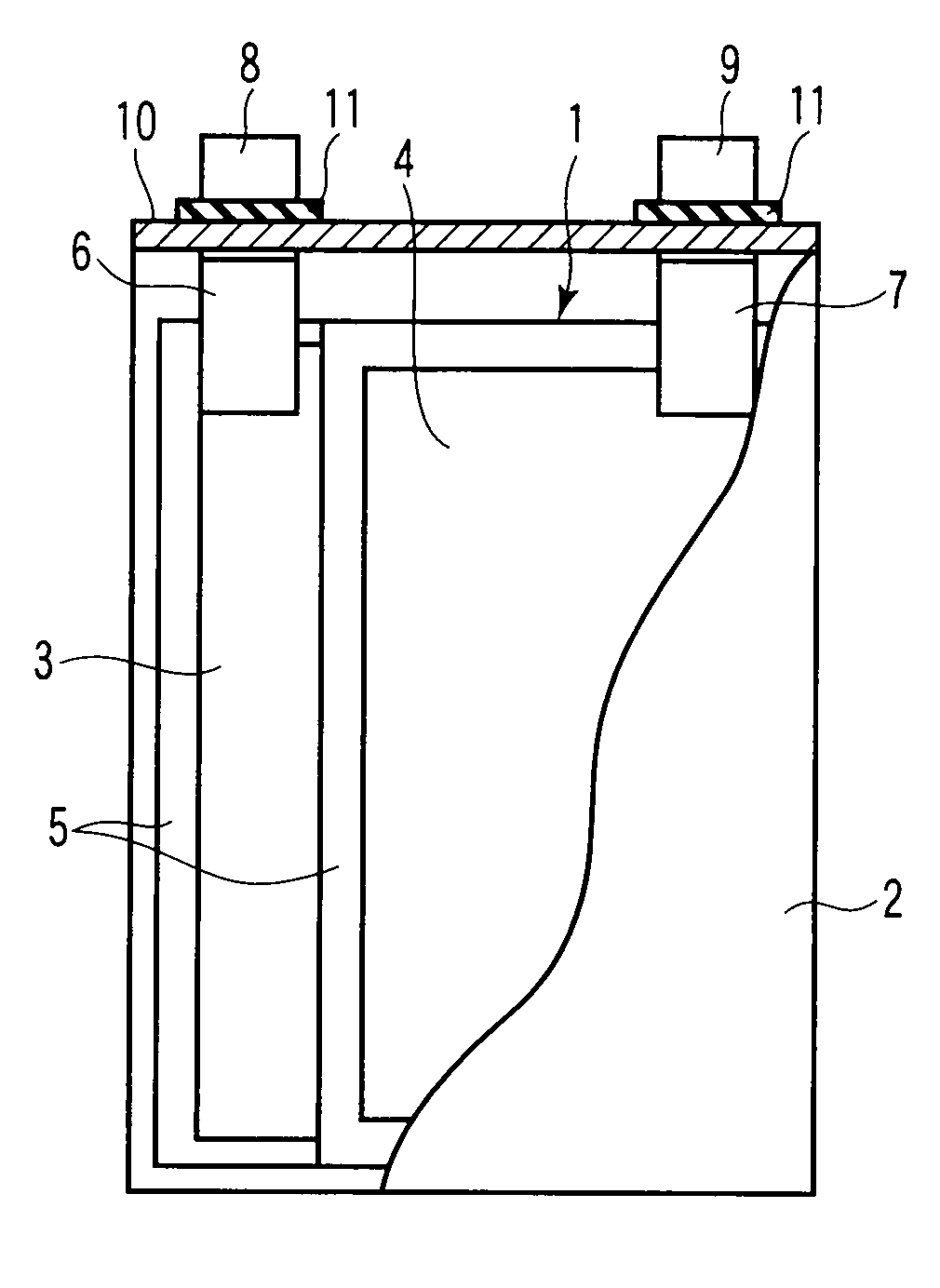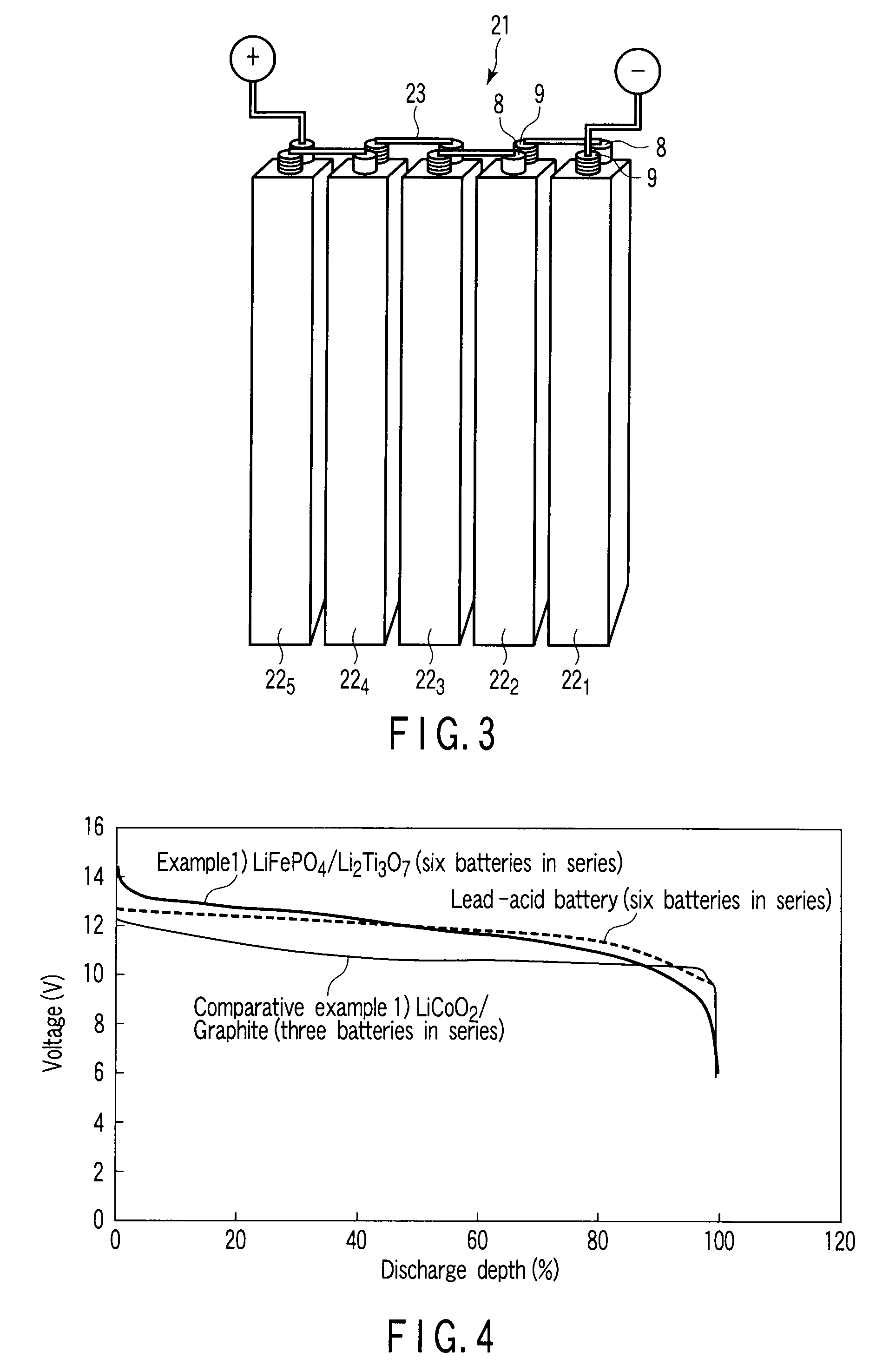Secondary battery, battery pack and car
- Summary
- Abstract
- Description
- Claims
- Application Information
AI Technical Summary
Benefits of technology
Problems solved by technology
Method used
Image
Examples
first embodiment
[0033]The inventors have found that when a separator containing cellulose fibers satisfies the following requirements (A) to (C), it has high-temperature durability enough to mount a secondary battery and a battery pack comprising the secondary battery in a vehicle and is, at the same time, superior in output performance at temperatures from room temperatures to high temperatures and low-temperature output performance.
[0034](A) The porosity of the separator is 55 to 80%.
[0035](B) The separator comprises pores having a specific surface area of 5 to 15 m2 / g.
[0036](C) The separator has a pore diameter distribution having a first peak at a pore diameter of 0.2 μm (inclusive) to 2 μm (exclusive) and a second peak at a pore diameter of 2 to 30 μm.
[0037]When a secondary battery or a battery pack is mounted in a vehicle or electric train, it is subjected to a temperature as high as 100° C. or more depending on where it is placed. For this, a polyolefin separator which is frequently used wil...
second embodiment
[0110]A battery pack according to a second embodiment comprises a battery assembly comprising the secondary batteries according to the first embodiment. Though these secondary batteries may be connected in series or in parallel, it is particularly preferable that these secondary batteries be connected in series and n units (n is 1 or more) each constituted of six secondary batteries be connected in series. A metal-phosphorous oxide having an olivine structure (for example, iron phosphate represented by LiaFePO4 (0≦a≦1.1)) is used as the positive electrode active material and also, LixTiO2 (0≦x, more preferably 0≦x≦1) or a lithium-titanium oxide having a rhamsdelite structure is used as the negative electrode active material, whereby the average voltage of the battery is 2V. In this case, when the number of batteries is made to be n times (n is 1 or more) the number of series of six batteries, the voltage of one unit constituted of 6 batteries connected in series is 12V, which is ver...
example 1
[0113]As the positive electrode active material, LiFePO4 particles having an olivine structure were used in which 0.1% by weight of carbon microparticles (average particle diameter: 0.005 μm) were stuck to the surface thereof. The average particle diameter of primary particles of LiFePO4 was 0.1 μm. To the LiFePO4 particles were added vapor phase growth carbon fibers having a fiber diameter of 0.1 μm as a conductive agent in an amount of 3% by weight, graphite powder in an amount of 5% by weight and PVdF as a binder in an amount of 5% by weight based on the total weight of the positive electrode. These components were dispersed in n-methylpyrrolidone (NMP) to prepare a slurry. Then, the obtained slurry was applied to both surfaces of an aluminum alloy foil (purity: 99%) 15 μm in thickness, dried and then subjected to a pressing step to manufacture a positive electrode. In the obtained positive electrode, the density of the electrode was 2.2 g / cm3, the thickness of the positive elect...
PUM
 Login to View More
Login to View More Abstract
Description
Claims
Application Information
 Login to View More
Login to View More - R&D
- Intellectual Property
- Life Sciences
- Materials
- Tech Scout
- Unparalleled Data Quality
- Higher Quality Content
- 60% Fewer Hallucinations
Browse by: Latest US Patents, China's latest patents, Technical Efficacy Thesaurus, Application Domain, Technology Topic, Popular Technical Reports.
© 2025 PatSnap. All rights reserved.Legal|Privacy policy|Modern Slavery Act Transparency Statement|Sitemap|About US| Contact US: help@patsnap.com



